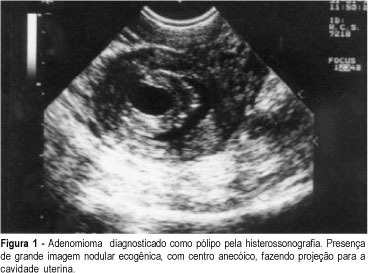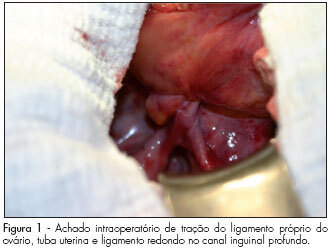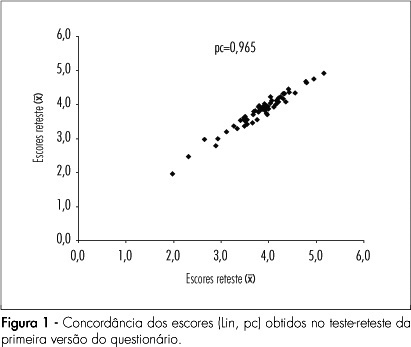Summary
Revista Brasileira de Ginecologia e Obstetrícia. 2006;28(5):292-297
DOI 10.1590/S0100-72032006000500005
PURPOSE: to verify if there is a relationship between the clinical periodontal parameters and estrogen levels and bone mineral density (BMD). METHODS: forty-six post-menopausal women aged 44 to 68 years (52.2±4.8) and 15 women aged 35 to 54 years (44.7±7.5) were evaluated. Periodontal parameters like probing depth (PD), clinical attachment loss (CAL), and missing teeth (MT) were compared with estrogen levels (sufficient and insufficient) and BMD (normal, osteopenic and osteoporotic). Data of the mean difference between the groups were compared by the Aspin-Welch test. RESULTS: the means of PD, CAL and MT, when associated with the normal (2.1±0.5; 2.9±1.4 and 10.6±5.0), osteopenic (2.3±0.7; 3.0±1.1 and 12.8±5.1) and osteoporotic BMD (2.4±0.6; 2.7±0.9 and 14.3±5.7), did not show statistical difference (p>0.05). A significant difference was found between the control group and postmenopausal women for CAL and MT. When compared with the estrogen levels the results did not show a difference regarding the periodontal parameters. CONCLUSION: although some studies showed a positive correlation with osteoporosis and estrogen level, in this population of menopausal women these findings were not confirmed.
Summary
Revista Brasileira de Ginecologia e Obstetrícia. 2016;38(6):293-300
To assess the prevalence of depressive symptoms and their association with social, psychological, behavioral and obstetric characteristics in pregnant women.
This is a cross-sectional study. The sample consisted of 375 pregnant women who attended prenatal clinics in two public maternity hospitals located in the city of Goiania, Brazil. To testify the depressive symptoms, we used the Hospital Anxiety and Depression Scale (HADS). A descriptive statistical analysis was performed using programs such as CDC EPI-INFO(tm), version 7.1.5, and Statistical Package for Social Sciences (IBM SPSS), version 21.0.
the patients had probable depressive symptoms (15.47%) and possible depressive symptoms (25.33%). The bivariate analysis showed a significant association among "depressive symptoms" and the following variables: "single or divorced" (prevalence ratio, PR = 2.08; 95% confidence interval, CI = 1.26 to 3.44); "physical activity during pregnancy" (PR = 3.96; 95%CI = 1.28 to 12.31); exposure to "psychological/emotional" violence (PR = 4.74; 95%CI = 2.94 to 7.64); "prior mental problem" (PR = 2.66; 95%CI =1.49 to 4.73) and "obstetric complications during pregnancy" (PR = 2.53; 95%CI = 1.55 to 4.13). The multivariate analysis confirmed the association of these depressive symptoms with the variables "suffered psychological/emotional violence" (odds ratio, OR = 5.821; 95%CI = 2.939 to 11.528); "physical activity during pregnancy" (OR = 3.885; 95%CI = 1.060 to 14.231); "obstetric complications during pregnancy" (OR = 2.442; 95%CI = 1.233 to 4.834) and "single or divorced" (OR = 2.943; 95%CI = 1.326 to 6.533).
the prevalence of depressive symptoms among pregnant women is of 15.47%, and emotional violence is the main factor associated with gestational depression.
Summary
Revista Brasileira de Ginecologia e Obstetrícia. 2000;22(5):293-299
DOI 10.1590/S0100-72032000000500007
Purpose: to determine the role of sonohysterography in the evaluation of abnormalities in the uterine cavity in patients presenting abnormal uterine bleeding, who had previously been selected by transvaginal ultrasonography. Methods: forty-eight patients presenting abnormal uterine bleeding and changes in the uterine cavity seen by transvaginal ultrasonography were selected, and they were in the menacme or postmenopause period. All patients underwent a sonohysterography, and later a hysteroscopy and/or a hysterectomy. The sonohysterographies were evaluated by two different physicians, and the diagnoses were compared. Results: the sonohysterography method showed high sensitivity and specificity for the diagnosis of benign pathologies in the uterine cavity. First, in the presence of polyps the sensitivity and specificity rates were 100 and 97%, respectively, second, in the presence of submucous myoma, they were 83 and 100%, and finally, concerning endometrial hyperplasia and normal endometrium, they were 100%. We diagnosed thirty-three cases of polyps, thirteen cases of submucous myoma, four cases of endometrial hyperplasia and three normal cases. The correlation between the diagnoses provided by the two physicians was high. Conclusions: sonohysterography is a safe and fast method which is very well tolerated by the patient, and has low levels of complications. Its high sensitivity and specificity allow this method to be used for routine diagnosis concerning benign pathologies in the uterine cavity of patients presenting abnormal uterine bleeding.

Summary
Revista Brasileira de Ginecologia e Obstetrícia. 2002;24(5):293-299
DOI 10.1590/S0100-72032002000500002
Purpose: to study the prenatal care among Public Health Service ("Sistema Único de Saúde") users from Caxias do Sul - RS. Methods: a transversal study of 702 pregnancies attended at the Hospital Geral -Universidade de Caxias do Sul from March 2000 to March 2001 based on the criteria set by the "Programa Nacional de Humanização do Pré-natal e Nascimento (PNHPN)" of the Brazilian Ministry of Health. Results: the observed prenatal coverage was 95.4%, whereas the average of visits was 6.2. The main reported reason for not following prenatal care was the lack of information about its importance (65.6%). In 51.5% of the cases, prenatal care started in the third month of pregnancy, whereas 44.3% of the pregnant women carried out all the proposed complementary tests. Prenatal care was considered inappropriate in 64.8% and appropriate in 35.2% of the cases. The quality of prenatal attention was significantly associated with the mother's education, as well as with the number of previous deliveries. The higher the educational level, the better the quality of observed prenatal care (p=0.0148). In addition, the higher number of previous deliveries showed to be associated with a later beginning of prenatal care and a lower number of visits (p=0.0008). Conclusions: the prenatal care available at Caxias do Sul in spite of its good coverage, should be reviewed in terms of quality. Special attention should be given to education in health along the prenatal assistance.
Summary
Revista Brasileira de Ginecologia e Obstetrícia. 2010;32(6):293-297
DOI 10.1590/S0100-72032010000600007
The symptoms of ovarian tumor are not specific and a rare presentation of the tumor is as the content of an inguinal hernia. We reported a case of an 82-year-old woman, diagnosed with breast cancer and with a concomitant hypoecoic adnexal mass at the ecographic exam. The patient was treated with conservative breast surgery and laparotomy. A cystic-solid ovarian lesion was found inside the right inguinal canal. Frozen-section examination was negative for malignancy, and the anatomopathological analysis revealed a borderline ovarian tumor.

Summary
Revista Brasileira de Ginecologia e Obstetrícia. 2009;31(6):293-299
DOI 10.1590/S0100-72032009000600005
PURPOSE: to generate and validate a proper questionnaire to evaluate the sexual function in post-menopause women. METHODS: 251 women, within 2 to 15 years postmenopause, were included in the study. Questionnaire's reproductibility/reliability was evaluated by Pearson, intraclass and Lin's correlation coefficients. The internal consistance was examined by the Cronbach's alpha coefficient. Classical item theory guidelines were used for face, content and construct validation. RESULTS: an instrument with 57 items and nine domains was generated. Fourteen questions (24.5%) were eliminated by either poor correlation with the scale or low discriminative power. The final version with 43 items has shown good reproductibility (r=0.719, 95%CI=0.690-0.750; pc=0.887; 95%CI=0.850-0.930; p<0.001). Internal consistance was also adequate (α=0.951). About 60% of the reviewers have confirmed face and content validation. The construct validation was assessed by the Cronbach alpha 0.951. CONCLUSIONS: it was concluded that the new instrument is appropriate for evaluating the sexual function in post-menopause women.

Summary
Revista Brasileira de Ginecologia e Obstetrícia. 2023;45(5):293-296
Summary
Revista Brasileira de Ginecologia e Obstetrícia. 2012;34(7):293-295